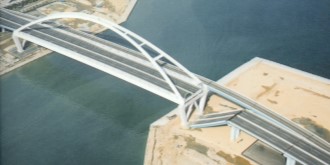On-site Short Course on Geotechnical Earthquake Engineering
The on-site short course is the outcome of 20 years of continuous development, starting as a field trip in 1999 and taking place almost every year since, being mainly offered to graduate–level students of the National Technical University of Athens. The short course offers a unique opportunity to study real case histories in the field, learning from the Japanese experience. It includes field visits and on-site lectures to:
- Earthquake damaged sites, where the participants have a unique opportunity to study seismic failures from the Kobe 1995 earthquake. For each site, the possible causes of failure are documented and critically evaluated. Similar to differential diagnosis, the participants progressively learn the basic steps of a forensic investigation.
- Pioneering and Monumental Structures, where the participants are exposed to new and emerging technologies. Design and construction techniques are studied, focusing on key technological difficulties. The applied solutions are critically evaluated and compared to the European and the US experience.
- Large–scale Experimental Facilities, offering a unique opportunity to learn about the latest advancements in large-scale physical model testing and earthquake engineering research. The key components of shaking tables are analysed, and the concept of centrifuge modelling is introduced.

Why on-site ? … and why to go all the way to Japan?
- Located in a very narrow stretch of land (a mere kilometer wide, but almost 30 km long), Kobe is characterized by an almost surreally dense infrastructure. Most of its expressways are elevated on bridges, and a substantial part of the city (including the Kobe Port) is built on reclaimed land. As a result, during the 1995 earthquake almost every kind of structure was tested under extreme seismic shaking. Although over 25 years have passed, the Japanese preserve the memory of the earthquake with comprehensive Museums and Earthquake Memorials.
- Japan is one of the pioneers in Earthquake Engineering. The Japanese are constantly striving for innovation, to improve the safety of new-built structures and to enhance the survivability of the existing through efficient retrofit solutions. The gap between research and practice is small, and novel methods being readily applied in practice.
- Japan offers a great variety of Pioneering and Monumental Structures. In the outskirts of Kobe, one can find the World’s longest suspension bridge, Akashi Kaykio, with a main span of about 2 km and a unique Exhibition Center where all design and construction aspects are presented in detail. Just an hour drive from Kobe, one can find the World’s largest shaking table, E-Defense, capable of shaking 1200 tons to more than 1 g base accelerations.
With all of the above being in a single place, a substantial amount of knowledge can be acquired, covering a wide range of engineering aspects, going all the way from research to practice, and including a variety of technological issues. Moreover, through such an international approach, the achievements of participating nations can be exploited in fostering knowledge transfer, and inspiring participants to become out-of-the-box thinkers, contributing to their becoming the future leaders in the field of earthquake engineering (geotechnical and structural).
Completed short courses
- 2019: Kobe & Tokyo, May 30–June 6
Download Detailed description (PDF, 1.9 MB) - 2018: Kobe & Tokyo, June 2–9
- 2017: Kobe & Tokyo, June 1–8
- 2016: Kobe & Tokyo, June 7–14
- 2014: Kobe & Tokyo, May 7–14
- 2011: Kobe, October 2–9
- 2010: Kobe, Αpril 4–13
- 2009: Kobe, Αpril 20–29
- 2008: Kobe & Taiwan, April 20–May 3
- 2007: Tokyo & Kobe, Αpril 4–13
- 2006: Kobe & Tokyo, June 16–24
- 2004: Kobe & Tokyo, May 31–June 6
- 2003: Kobe &Tokyo, April 15–23
- 2002: Kobe &Tokyo, March 25–May 5
- 2001: Kobe & Tokyo, April 16–23
- 1999: Kobe and Tokyo, March 14–22